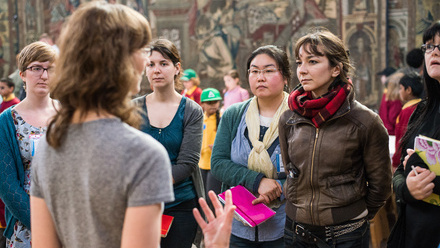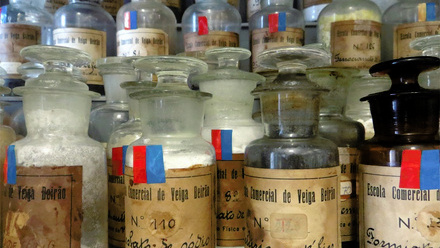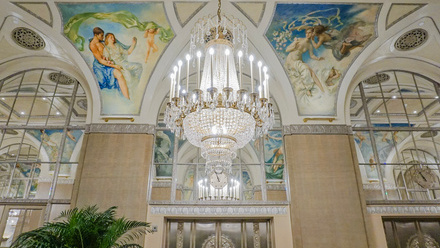Icon Scotland Group presents a new Take 5 webinar, with 5-minute presentations by 5 different conservators about some of their recent projects:
Senses Working Over Time: tactile engagement for written heritage, by Victoria Stevens ACR, Victoria Stevens ACR Library and Archive Conservation and Preservation Ltd.
Written heritage conservation is all about access: taking practical steps that enable people to engage with the information objects contain safely and without risk to them or the objects themselves. As a library and archive conservator, Victoria Stevens has developed a strong appreciation of how much information and knowledge may be gained from touch, sound, smell and sometimes even taste, all of which complement and broaden the written information items contain to form a much deeper appreciation and understanding of an object's history and its previous use.
The Take 5 Engagement programme takes this non-visual information an object has to give as its focus. There are many people who experience barriers to conventional learning, and who may respond more positively and completely to information through senses other than sight and reading alone. Based on fun and accessible workshops, some of which may be delivered online, the Take 5 project uses the material properties of archive and library objects and conservation techniques combined to increase understanding and confidence, provide a sense of personal pride in achievement and break down physical and cultural barriers to learning and inclusion in libraries and archives.
The presentation will set out these aims, demonstrate how and to whom they may be delivered and discuss longer term goals for the project.
Conservation of an Iranian Tile Panel at the National Museums of Scotland, by Holly Daws, National Museums of Scotland.
The talk will detail the ongoing conservation work of a 17th Century tile panel which is planned for display as part of the Arts of Iran exhibition at the National Museum of Scotland. The panel is dated from the Safavid period and is associated with the garden palace Bagh-i Sa'adatabad in Isfahan, Iran. The tile panel is one of the few intact examples from this period in museum collections worldwide.
The tile panel has been in storage since 2008 due to its condition and heavy mounting. Previous restorations have aged, discoloured and are failing. Further to this, areas of original material have been overpainted. The aim of the treatment is to remove the tiles from the existing backing, to improve the appearance and stability of the tiles and to remount on a light support structure.
The talk will briefly outline: Historical context, condition of the panels, the aim of the project, treatment stages so far, and future treatments.
Learn by doing: the casting, finishing and patinating of bronzes, by Heleen van Santen, freelance metal conservator.
The presentation of a collaboration between a conservator, a designer and a bronze foundry, using their different expertises to experiment with the casting, finishing and patination of bronze.
The goal of this project was to learn by doing, building on Heleen van Santen's metallurgical and technical experience as a conservator, the process and aesthetic eye of the designer and the practical know-how of the foundry. This collaboration resulted in an archive of 81 different patinas that will be permanently displayed at the foundry, and a free digital publication to inspire future makers to incorporate patination into their projects. For the field of conservation, learning more about the manufacturing and finishing of cast bronzes can be used to help us better understand cultural heritage objects.
Conservation Live: public engagement from a digital distance, by Lesley Stevenson ACR FIIC, National Galleries of Scotland.
Lesley will outline a conservation project currently underway at the National Galleries of Scotland. Robert Scott Lauder’s Christ Teacheth Humility is being prepared for new displays focussing on Scottish art that are due to open later in 2022. Originally planned to be shared live with visitors, Covid restrictions and the inevitable disruption to the NGS public programme, necessitated a change in direction for this initiative. The transfer of all public engagement to digital platforms resulted in this conservator facing challenges to her outreach and IT skills.
Conditional Confusion: considering variations in language used for object documentation, by Beth Gillions, Centre for Textile Conservation, University of Glasgow.
Documenting object condition can be pivotal to informing conservation treatments, determining object roles, and limiting or enabling object use and display. Yet within the heritage field object condition reports are generated in a variety of ways, by a range of individuals of diverse types and levels of training. This presentation will consider the reasons variations in terminology exist and highlight some preliminary ideas about how this may impact upon our preservation of, and approaches to historic objects.



